Panama Disease Overview:
Panama disease, caused by the Fusarium fungus, is a major threat to banana plantations worldwide, particularly impacting the Cavendish variety.
Objective in Israel:
Our goal is to develop and implement effective strategies to combat Panama disease and protect banana crops through rigorous laboratory and field trials.
Recent Experiments – Collaborative Effort:
In the past three months, AGB Israel, in partnership with the Plant Protection Department of the Ministry of Agriculture of Israel, has conducted several key experiments. A major focus was on a severely infected site in the kibbutz of Ein Gev, near Tiberias.
Before Treatment:
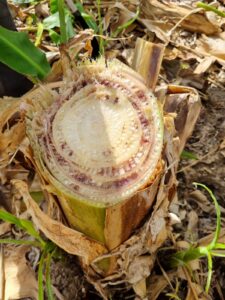
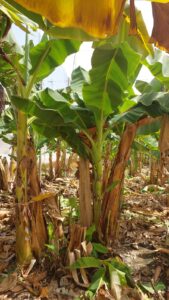

-
- Visual Observations:
-
- Sick and Dead Trees: The images below depict banana trees affected by Panama disease, with visible signs such as brownish trunks and leaves.
-
- Clogged Water Channels: Blocked water channels resulted in insufficient water supply, contributing to the trees’ death.
After Treatment:
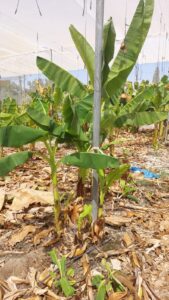
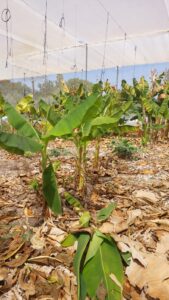
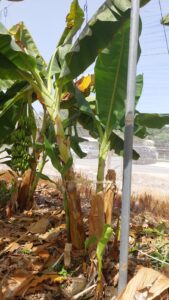
-
- Recovery Observations:
-
- New Growth: The treated area has shown remarkable recovery, with a new generation of healthy trees growing alongside previously dead ones.
-
- Sick Trees Recovering: Some trees that were initially sick have begun to recover, with new banana clusters emerging.
Results and Analysis:
-
- Improved Health: Over two months, we collected and analyzed samples from the beginning, middle, and end of the treatment. Our findings, confirmed by RT-PCR Fungi and soil tests, indicate a full recovery of the trees.
-
- Disease Reduction: Panama disease incidence in treated fields has been reduced to zero.
-
- Soil Health: Soil health has significantly improved, with no traces of the disease or harmful chemical residues.
Future Outlook:
The success of these trials has surpassed initial expectations, showing a promising long-term solution for managing Panama disease. AGB Israel plans to extend the application of our effective treatment to other regions facing similar challenges.
